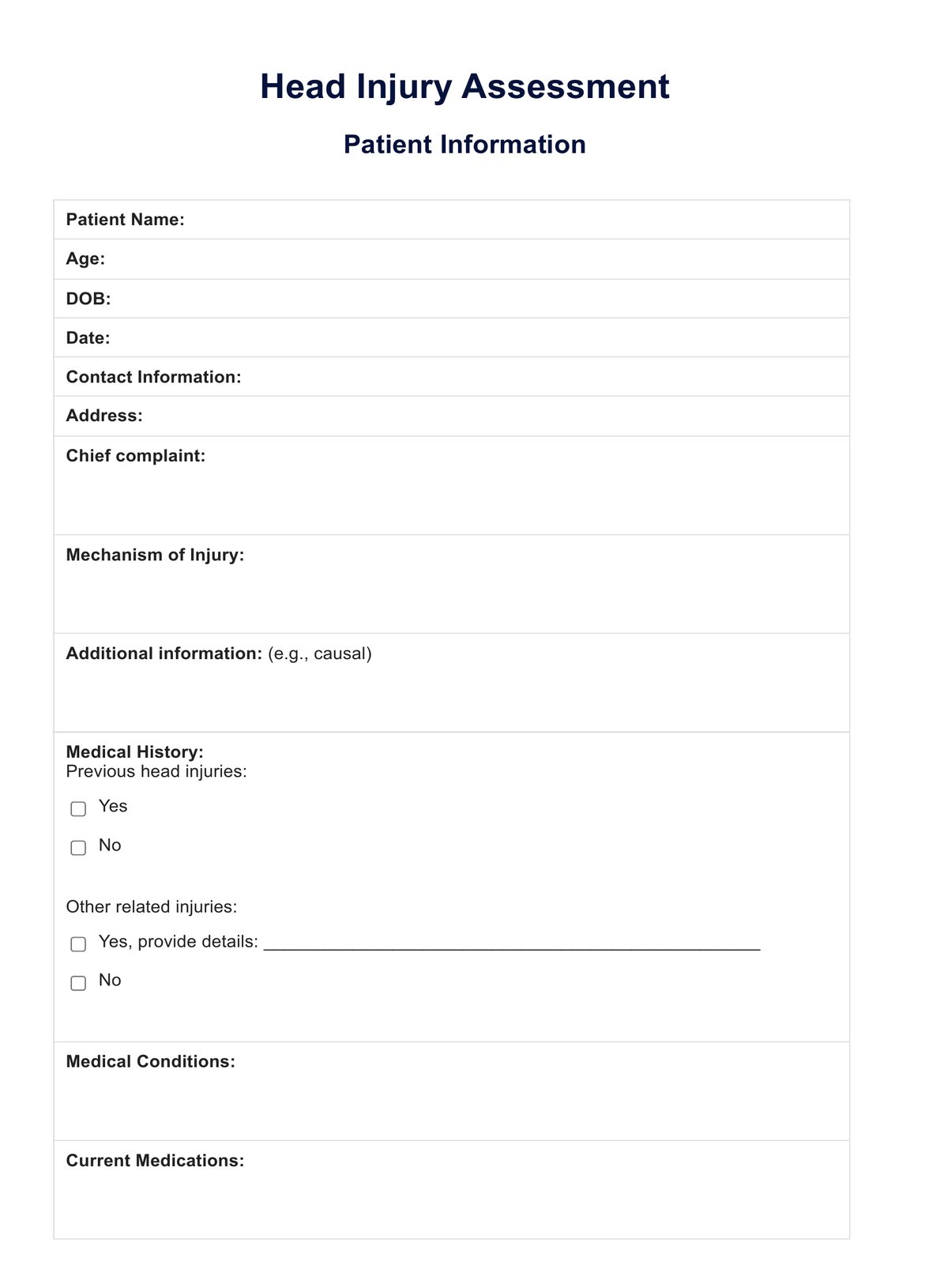A Head Injury Assessment is conducted following head trauma or symptoms that may be related to a head or brain injury. Typical instances in which this occurs include the following: loss of consciousness, behavior changes, head impact, or behavior changes.

Head Injury Assessment
Experienced a head injury? Make sure you complete our Head Injury Assessment for early diagnosis for effective management.
Head Injury Assessment Template
Commonly asked questions
Results following an assessment are multi-faceted and experienced differently depending on individual factors. Preliminary results from a Head Injury Assessment may include a mild brain injury, skull fractures, focal neurological deficit, or a severe head injury. These results are then defined with further diagnostic testing.
A registered health professional, such as an emergency department physician, paramedic, or nurse, typically conducts these assessments. Depending on the context of the injury, the patient's condition, and the available equipment, these professionals may only be able to complete a partial assessment until they have further assistance.
EHR and practice management software
Get started for free
*No credit card required
Free
$0/usd
Unlimited clients
Telehealth
1GB of storage
Client portal text
Automated billing and online payments











